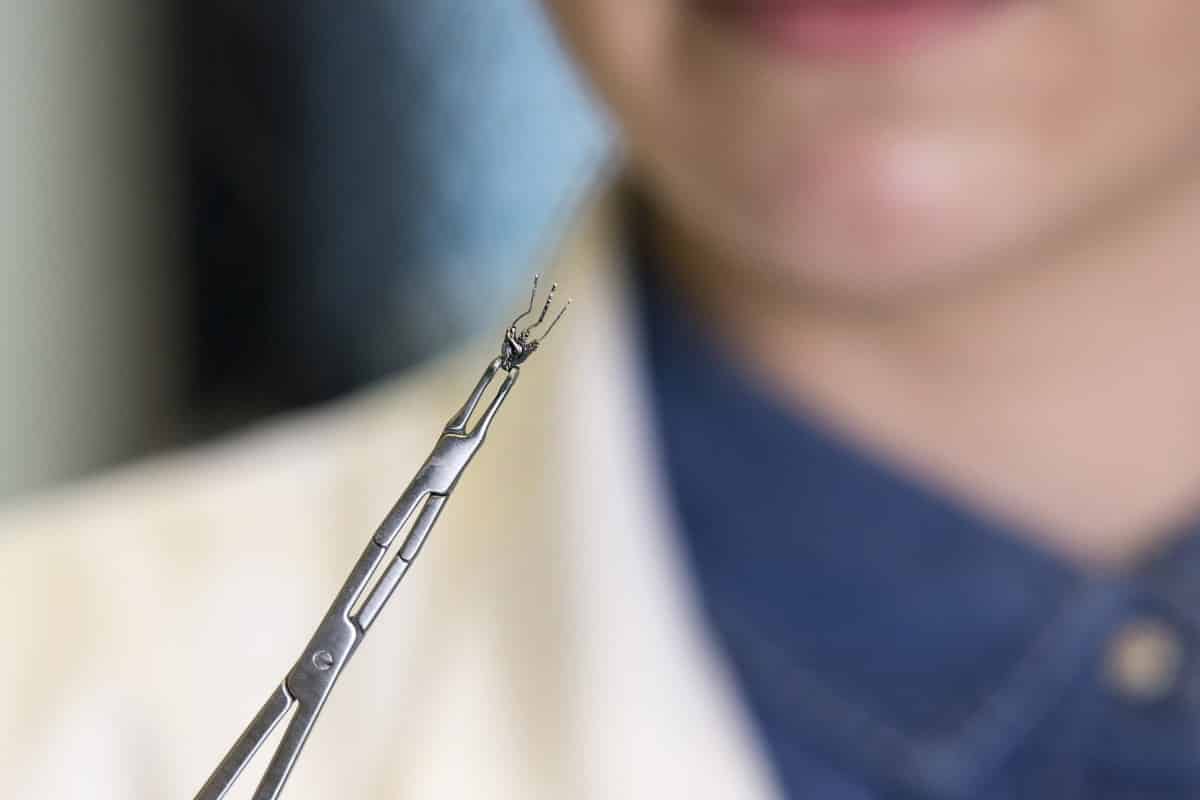
Applying a bypass to the heart without opening the chest and without using a heart-lung machine: up until recently, it was a distant prospect. However, with the development of ELANA, a technique that was developed in neurosurgery, this operation is only a short distance away. “All pre-clinical tests have been completed. At the end of the year, we are going to apply the ELANA technique to heart patients,” says Glenn Bronkers, CTO of AMT Medical, co-developer of the technique.
Every year, about one million people get a coronary bypass. The bypass is necessary when there is a narrowing in an important vessel around the heart, a coronary artery. This narrowing can lead to an infarction. By applying a bypass, a kind of detour, the heart muscle is supplied with blood and oxygen again and the heart can maintain its function.
However, the operation involves risks. The cardiac surgeon has to open the chest, pause the heart and connect the patient to a heart-lung machine that temporarily takes over the tasks of the heart during the operation. Moreover, it takes a lot of time to recover from such an operation. With the technique developed by AMT Medical, this will soon be a thing of the past.
Brain surgery

Professor Tulleken, father of AMT Medical CEO Rutger Tulleken, invented the technique in the 90s for brain surgery. As a neurosurgeon at UMC Utrecht, he ran into a problem. If you have to make a bypass in the brain, you can’t ‘just’ close a vessel, but you can’t leave it open either. Then a brain region either gets no oxygen, or you get a brain hemorrhage.
“So Professor Tulleken wondered: How can I make a bypass without first closing the receiving blood vessel?,” says Bronkers. “Then he thought: if you first connect the vessels to each other before making an opening in the vessel, you might be able to do it.”
It goes as follows: You have a piece of vessel in the brain that contains, for example, an aneurysm, a local dilation of the vessel. Before and after the aneurysm you make a detour. However, before you close the vessel with the aneurysm, you first test the bypass connections. Is everything secure? Is it not leaking? Then you can use a laser to make a passage through the new vessel to the vessel before the aneurysm and to the vessel after the aneurysm. This way, the blood continues to flow continuously and you have fewer risks.
The above technique, the ELANA technique, has now become the standard in neurosurgery. However, it took some time for ELANA to make the step towards other operations.
Cardiac surgery
“For its applicability in cardiac surgery, we had to further develop the technique,” says Bronkers. “Cardio surgeons, for example, preferred not to use sutures and are making a different type of bypass than in the brain, namely a side-to-side bypass.”
In recent years, the technology has been perfected. It is now possible to apply a bypass to the heart without using stitches and without stopping the heart. “The patient no longer needs the heart-lung machine and there is less time pressure for the surgeon,” says Bronkers. “The surgeon can now apply and test the bypass at his own pace before it becomes functional. In addition, this technique is more standardized than today’s surgical technique, making the result less dependent on the doctor’s experience. Now cardiac surgeons in training have to practice more than two hundred times before they can make a bypass on a patient’s heart.”
Commercial and care
AMT Medical is a company where the commercial world merges with care and science. In the early years of ELANA, this was illustrated by the collaboration between Professor Tulleken, a neurosurgeon with expertise, and Rutger Tulleken, who has a commercial background. Meanwhile, the rest of the company also represents this relationship. For example, a PhD student has joined from the Sint Antonius Hospital in Nieuwegein and research is being done at the company, but at the same time, AMT Medical is able to take rapid steps in the development of the technology due to its commercial approach.
The latter can be difficult when developing products that are designed in science and remain within science. “A large number of ideas that arise in the academic world do not develop further if the ideas remain within the academic world,” says Bronkers. “We can act fast now.”
Deutsches Herzzentrum Berlin
The world of cardiac surgery eagerly awaits the developments in this new surgical technique. The involvement of Professor Volkmar Falk, a renowned cardiac surgeon at the Deutsches Herzzentrum Berlin, certainly contributes to this. A clinical study is about to start so that the technique can eventually obtain CE certification. During the study, forty patients will undergo surgery with this technique under the leadership of the heart centre in Berlin: ten in Berlin and the remaining thirty in various hospitals in Europe. Patients in the Netherlands will also undergo surgery with this technique, but it is not yet clear which hospitals will take part in it.
After successful applications in the brain and in the heart, ELANA may also be used in other operations in the future. “For example, it could soon be used for dialysis patients or for transplants,” says Bronkers. “Someone recently said to us: ‘You started in the most delicate area, the head’. In doing so, we have laid a very good foundation for eventually applying it to other operations as well.”

